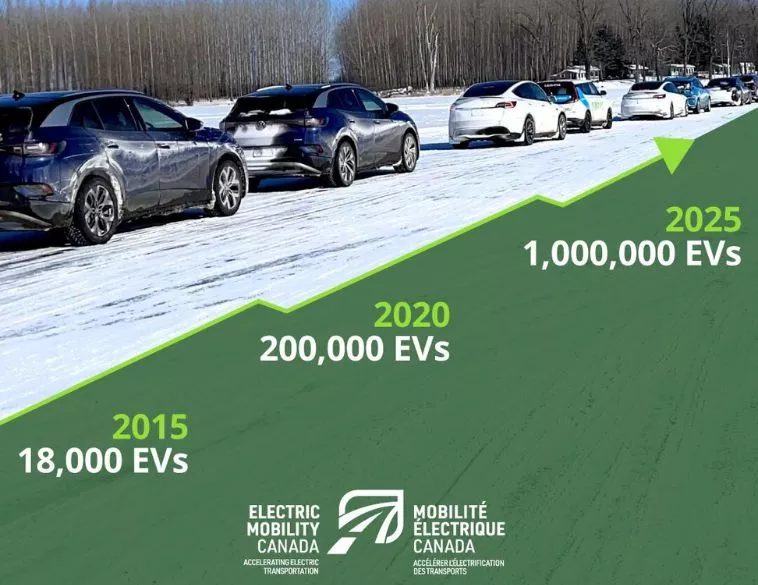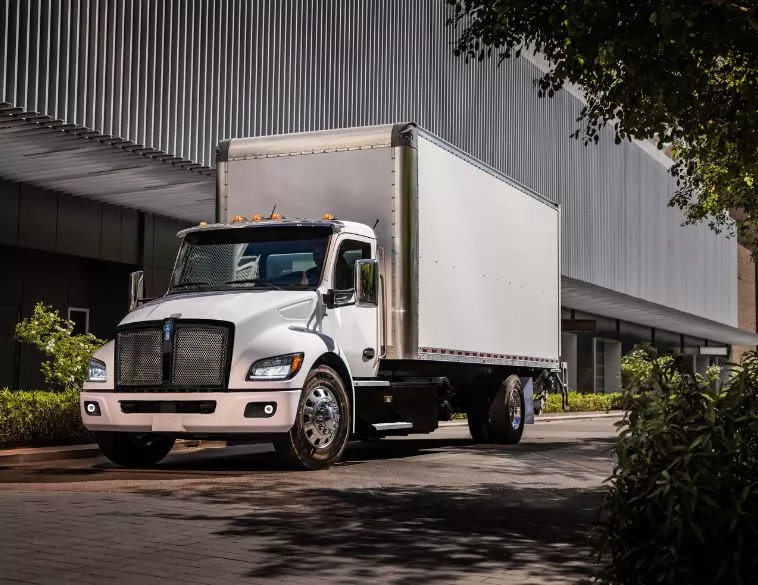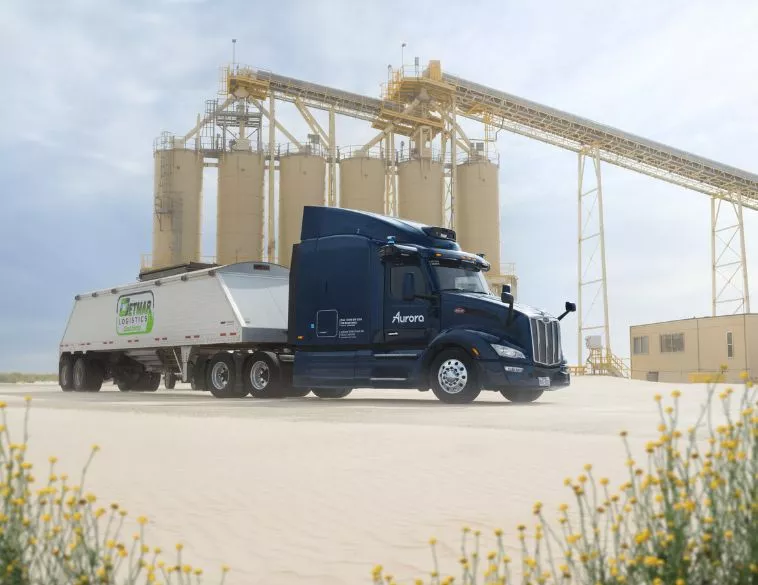Choice and Flexibility
OEM Panel discussion at NAFA I&E 2025 emphasized the need for different powertrain options, and adaptability to fleet customer and market requirements.
One of the most popular sessions at NAFA I&E is the OEM Panel and at the 2025 event in Long Beach, California, this was no exception. The discussion, which took place on the 100th day of President Donald Trump’s second term in office, covered a whole variety of topics that are currently front and centre among many fleets and fleet managers.
Moderated by Chris Brown, Associate Publisher of Automotive Fleet, the panel featured Gabriel Slack, Sales Enablement Manager, GM Envolve, Eric Swanson, Vice President, Commercial Sales, East Region, Stellantis and Greg Wood, Commercial & Government Sales General Manager, Ford Pro.
Tariff talk
Kicking things off, the panelists dove into one of the key topics that has shaped the first half of 2025, namely Tariffs initiated by the Trump Administration on products imported into the U.S.
As Eric Swanson noted, the so-called “Stackable Tariffs,” have and continue to be a very fluid situation, one that makes it very difficult for many businesses to make predictions and plan accordingly.
Swanson noted that for OEMs and their fleet operations, like many businesses, 95% of market factors are beyond their control, however, it’s the 5% they can control that can make all the difference, especially over the longer term. “Communicate and work with your customers,” he said. “Find out what they need, and utilize your teams, wherever they are located to work with them.”
Gabriel Slack said that risk mitigation, particularly around issues such as logistics gained new importance for OEMs and suppliers during the COVID-19 pandemic and today, being able to adapt and pivot quickly is a huge advantage in what is a volatile and unpredictable operating environment.
Swanson added in addition to adapting and fitting into the marketplace, being competitive in the fleet industry also drives innovation and helps individual business, customers and the sector grow collectively.
Changing regulations
Regarding ever-changing regulatory requirements, particularly as they relate to fuel economy standards and emissions, the only constant is change. That being said, Wood noted that it’s important to give customers choice, one reason why Ford Pro has and will continue to offer a variety of powertrains, from gasoline, to diesel, to hybrid, plug-in-hybrid and pure battery electric, to ensure it can meet the requirements of and deliver benefits to different customers.
Given that fuel economy and emissions standards are currently in turmoil, with the Trump administration rolling back aggressive EV targets and battling states like California which have laid out regulations and timeframes for large-scale zero emissions vehicle adoption, it’s important for fleets to have a plan and a direction in which to reach their objectives. “Work with our commercial planners, have a clear plan, a general direction and an open and honest discussion.”
Leveraging associations
Gabriel Slack said, that in times like these, it’s important to leverage the power and expertise of organizations like NAFA. He noted that while there is a chance that regulatory requirements will ease over the next few years, engaging with your associations and with politicians and regulators is key to ensure your voice gets heard and that one-size fits all regulations aren’t forced upon the industry.
Another hot topic in today’s fleet sector concerns vehicle procurement. The COVID-19 pandemic witnessed significant vehicle shortages, fueled by idled assembly plants and supply chain disruptions. When vehicles could be manufactured and sold, retail customers were prioritized meaning that many fleets saw their orders essentially dry up with no timeline as to when order banks would reopen.
In 2025, the situation has improved. Gabriel Slack noted that General Motors was among the first to go back to open ordering for fleet vehicles, but he noted that for fleet managers, because the situation is constantly changing and we still don’t know what the full impact of tariffs will be, it was critical to get fleet orders in quickly, so organizations aren’t stuck if order banks need to close again.
More balanced
Greg Wood said that while allocations were necessary for some OEMs during the COVID-19-era, it wasn’t something they liked doing. “It added expense and complexity on our side,” Wood explained. “Now that is behind us, things have balanced out again.” He noted that today, Ford Pro has an Accreditation Program (Ford Pro Upfitter/FPU).
This allows the sharing of data between Ford Pro and accredited upfitters, showing customers where the vehicle goes when it has left the assembly plant, so they can better plan for how long the upfit will take and when the vehicle will be delivered and ready for use.
Chris Brown asked the panelists about fleet electrification and their strategies when it comes to EV adoption. A consensus was, that proving customers with a variety of different options is essential to success going forward.
Gabriel Slack said that in GM’s case, some electric models such as the Chevrolet Equinox EV and Chevy Silverado/GMC Sierrra in both EV and internal-combustion engine forms have been popular with fleet customers, and there are [currently] advantages to running EVs in terms of service and maintenance, the key for OEMs is having a fresh and relevant portfolio of vehicles going forward.
Another powertrain option
Eric Swanson looked at electrification as simply another powertrain option and an industry trend following the footsteps of others such as vehicle downsizing in the 1970s, where market requirements and business needs drove adoption of smaller and better-packaged vehicles.
Greg Wood noted that technology advancements will continue to support each of the powertrain options available, whether it’s ICE, hybrid, PHEV or full-electric and he noted that in some fleet vehicles, such as the Ford Explorer based Police Interceptor, the hybrid powertrain option has enabled dramatic fuel, maintenance and total cost of ownership savings, given the amount of time police vehicles have, traditionally had to spend idling when in use.
Full range of service
Wood also mentioned that since Ford Pro was established as a separate business unit of Ford Motor Company, it has also focused on providing software, charging infrastructure and financing of fleet vehicles and related services. He talked about how today, OEMs’ professional fleet operations are essentially an entire package that’s built around the vehicle, giving customers the opportunity to operate their fleets at levels of efficiency that simply weren’t possible before.
A good example is mobile service that OEM fleet professional divisions now offer to their customers.
Gabriel Slack talked about mobile service that’s available for the Chevrolet BrightDrop electric vans, which when combined with concepts like parts availability and service scheduling, all enabled via vehicle connectivity, can help fleets minimize downtime and get their units back on the road as quickly as possible.
Greg Wood talked about the fact that mobile service is also flexible, meaning it’s available after hours so that repairs and maintenance can be performed when the customer needs them done, regardless of the hour or day.






